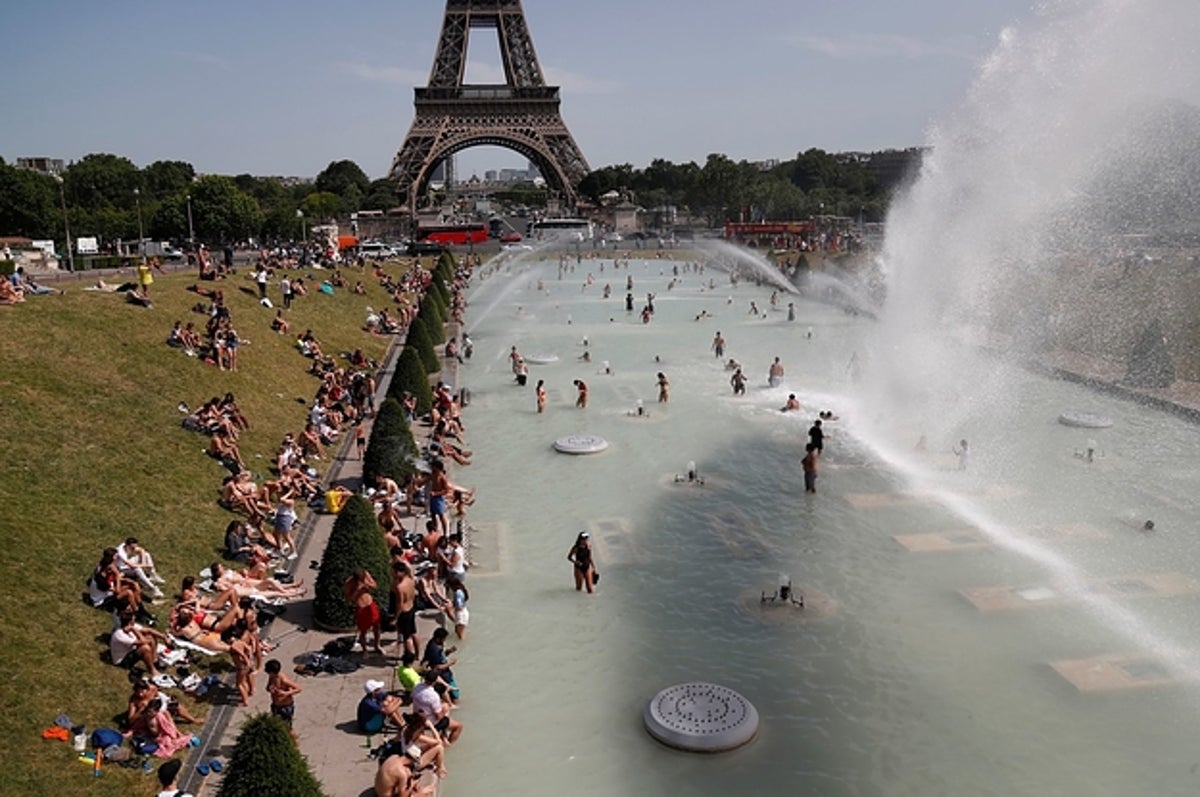HEAT WAVES ACROSS EUROPE

Disclaimer: Copyright infringement not intended.
Context
The intense heat wave experienced in southern Europe, particularly in Italy.
Details
- Italian health officials intensified heat warnings as southern Europe experienced a brutally hot week.
- Temperatures were expected to exceed 40 degrees Celsius.
- The Health Ministry issued recommendations to protect vulnerable groups from the heat, including the elderly, sick, and pets.
- Recommendations included staying indoors, consuming at least 1.5 liters of water daily, and avoiding strenuous exercise during peak daylight hours.
Measures to Assist Older People
- Health officials urged regions to enhance house-call services for older individuals, minimizing their need to go outside for medical care.
- Setting up dedicated heat stations at hospitals to provide assistance and relief to older patients.
Weather Conditions and Impact in Italy
- Italy experienced a third heat wave, affecting much of the Mediterranean and lasting until Wednesday.
- Rome recorded temperatures of 39 degrees Celsius, with expectations of exceeding 40 degrees Celsius the following day.
- Power outages occurred in parts of Rome due to increased demand from air conditioners.
Wildfires in Spain and Greece
- A wildfire that started on the Canary island of La Palma continued to burn out of control, although weaker winds and cooler temperatures were assisting firefighters.
- In Greece, two wildfires threatened homes in areas outside Athens.
Causes for Intense Heat Waves
Climate change
- The Earth's atmosphere has been warming for decades, due to human activities such as burning fossil fuels. This warming is causing heat waves to become more frequent, intense, and prolonged.
- A study by the World Meteorological Organization found that the probability of a heat wave like the one that hit Europe in 2022 has increased by at least 100 times due to climate change.
Double jets
- A double jet is a type of weather pattern that occurs when two jet streams, or bands of strong winds in the atmosphere, are present over Europe. This can cause hot air to be trapped over the continent, leading to heat waves.
- A study by the University of Oxford found that double jets have become more common in recent years, and that they are likely to become even more common in the future due to climate change.
Drought
- Drought can make heat waves more intense by drying out the soil and vegetation, which can trap heat.
- A study by the European Union's Copernicus Climate Change Service found that the risk of drought in Europe has increased by 20% since 1971.
Other factors
- Other factors that can contribute to heat waves include urban heat island effect, deforestation, and changes in ocean currents.
- The urban heat island effect occurs when cities are warmer than surrounding areas due to the heat generated by buildings, vehicles, and other human activities.
- Deforestation can reduce the amount of shade and moisture in an area, which can make heat waves more intense.
- Changes in ocean currents can affect the distribution of heat around the globe, which can lead to heat waves in some regions and droughts in others.
|
PRACTICE QUESTION Q) Discuss effective measures that governments and communities can adopt to mitigate the adverse effects of heatwaves. (150 words) |
https://epaper.thehindu.com/ccidist-ws/th/th_delhi/issues/44078/OPS/GQRBGDMA5.1+G0HBGEJLT.1.html




.jpg)
1.png)
